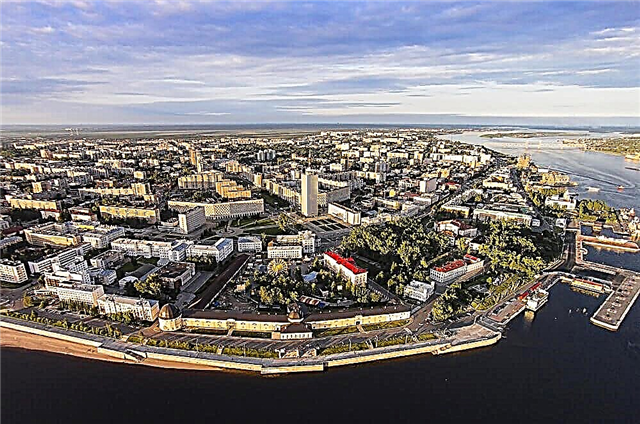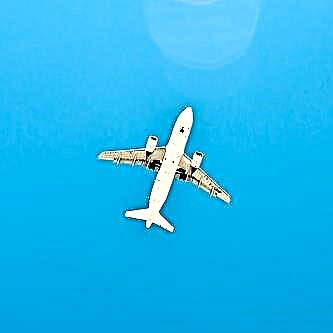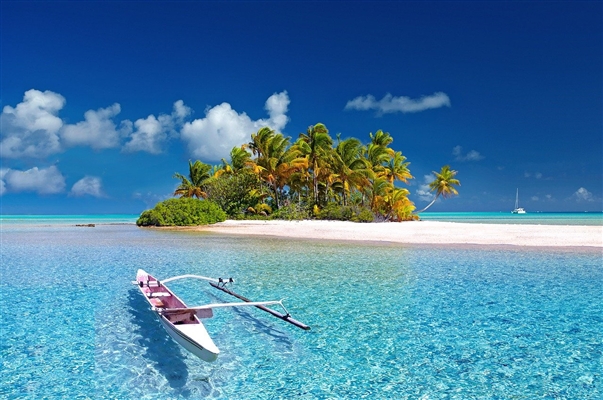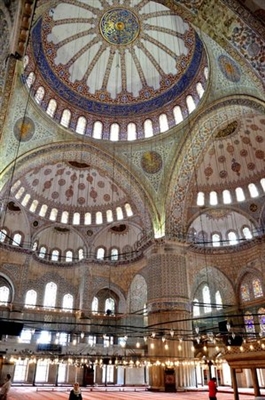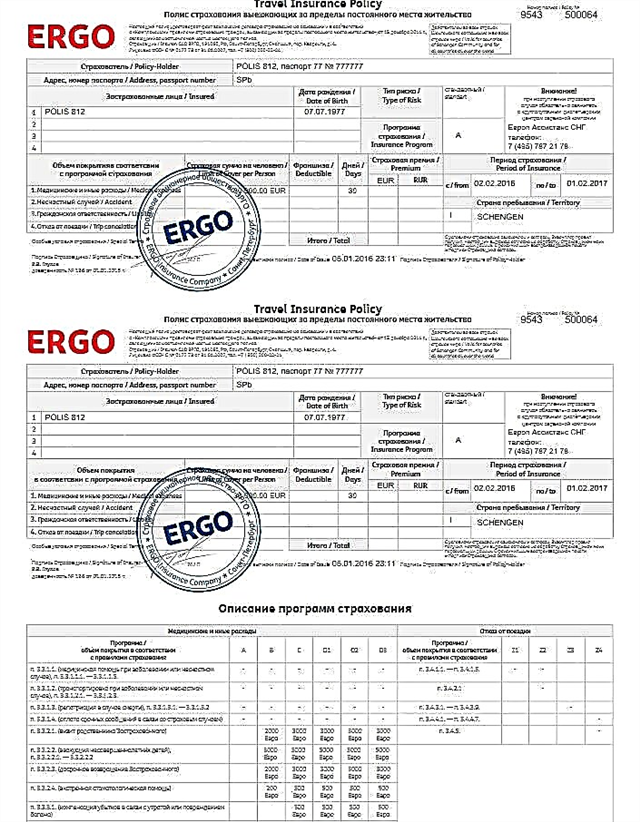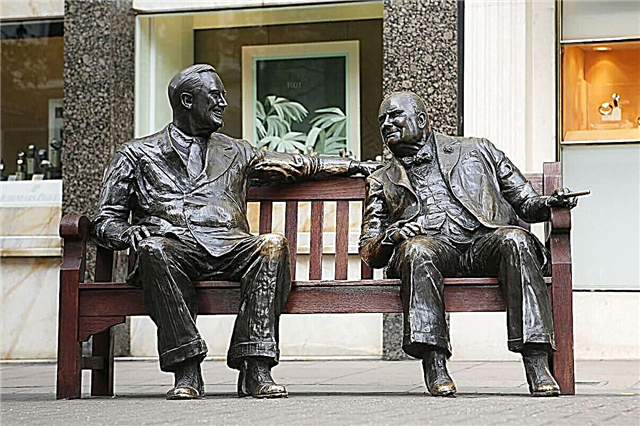In the British capital, you can find monuments dedicated to various important events in history. So one of the most venerable by age attractions is undoubtedly Cleopatra's Needle - an ancient Egyptian obelisk that came to London in transit through Alexandria.
Prominent politicians of England and figures from other countries are immortalized on Parliament Square. Contemporary sculptural art is represented widely and creates trends. So after the appearance of the "Traffic Light Tree" here, similar art objects were opened in other countries. Monuments related to Russia are also presented: this is the statue of Garin donated by Roscosmos, and the recently installed sculpture of Baba Yaga.
Historical and modern monuments of London
List of the most famous monuments and sculptures in the city.
Nelson's Column
Built in the 40s of the last century on Trafalgar Square. Dedicated to the naval commander Horatio Nelson, who died in 1805 in the Battle of Trafalgar. Architect William Railton was responsible for the project. Subsequently, a hero sculpture, bronze lions and relief panels were added to the column. The latter were cast from French cannons captured by the British as trophies.

Wellington arch
Installed in honor of the victory of the Duke of Wellington over Napoleon at Waterloo. It was created by order of King George IV. Although Decimus Burton, who also designed Hyde Park, wanted to add more detail and sophistication to the arch, he had to limit the impulses. The project was completed by 1830, and it looks very strict. 16 years later, an impressive sculptural group was placed on top.

Victoria Memorial
Located in front of Buckingham Palace, it is the main decoration of the Royal Garden. The sculptor Thomas Brock made a sculpture of Victoria in white marble. The monarch is surrounded by angels who identify Mercy, Justice and Truth. At the top is a figure symbolizing Victory. The opening of the composition took place in 1914 with the participation of George V - the king and grandson of Victoria.

Prince Albert Memorial
It was created by George Gilbert Scott by order of Queen Victoria, paid for from her personal funds and cost about 120 thousand pounds. The opening took place in 1875. The total height of the memorial is 54 meters. It consists not only of a sculpture of Prince Albert, but also of many details. For example, the monarch is surrounded by animals that symbolize the continents. And 169 more statues depict prominent figures of that era.

Monument to Bomber Pilots
Opened in Green Park near the Queen's residence in 2012. Liam O'Connor created a bronze memorial and placed it on a granite pedestal. A monument is dedicated to the pilots serving in the Royal Air Force who showed themselves during the Second World War. The figures are depicted with a special flavor: detailed uniforms, facial expressions are drawn to the smallest detail, as well as a pose and movement for each.

Monument to the Battle of Britain
Paul Day created the monument in 2005 from bronze and granite. The opening took place on the Victoria Waterfront in the presence of Prince Charles. A monument to the events of World War II is dedicated. The rectangular structure is 2 meters high and 25 meters long. Sculptural reliefs are located along the frontal part of its perimeter. They depict soldiers, fragments of battles and other iconic references to that period.

Monument to Sherlock Holmes
Installed on Baker Street near the address where the character of detective novels lives. The three-meter bronze sculpture was made by John Doubleday. His Holmes turned out to be completely consistent with the classical performance: he is dressed in his usual cloak, pensively looks into the distance and holds a pipe in his hand. The Sherlock Museum is located a couple of steps from here, so the monument is always crowded.

Monument to commemorate the Great Fire of London
The tallest isolated stone column in the world. Its size and location are symbolic: it is 202 feet high and the same distance to the point where the Great London Fire of 1666 began. You can go upstairs along a narrow spiral staircase. The column is crowned with an urn with gilded fire. Since there were problems with suicides in the past, a special grid had to be installed.

Monument to Yuri Gagarin
Located in Greenwich. In 2011, the sculpture was unveiled near the Arc de Triomphe. The place was significant, since Gagarin had been there and met with the British Prime Minister. Later, the monument was moved closer to the prime meridian. The first person to be in space seems to be taking a step beyond the planet Earth. At the same time, he stands on the Mobius strip - one of the main symbols of the infinity of the Universe.

"Animals at War"
The complex is located near Hyde Park. The monument created by David Beckhow was opened in 2004 by Princess Anne. The project is based on the book of the same name. And it is dedicated to animals that in one way or another helped the allied troops during the Second World War. There are animal bas-reliefs on the snow-white wall. On either side of the rift dividing the wall into two parts, there are bronze sculptures of animals.

Platform 9¾
Those who have read books about Harry Potter or watched films based on them do not need to explain what is hidden behind such a strange name. The rest will be no less interesting to visit the King's Cross station and look at the very place from where young wizards get to the school of magic. The monument is a cart, as if partially passed through the wall. Anyone can arrange a photo session here.

"Baba Yaga"
The bronze sculpture was made in Smolensk and transported to London in 2018. Here it was installed on Beauchamp Place. Irina Lagoshina, being the author of the project, not only promotes Russian culture in the West, but also tries to “rehabilitate” Baba Yaga. Before the adoption of Christianity, this character was not unequivocally negative, therefore, it is quite a feasible task to return the former features to the heroine of fairy tales.

Monument to Peter I
Installed opposite the house where the king lived during his visit to the British capital. Mikhail Shemyakin cast Peter from bronze. In the composition, everything is disproportionate, starting from the head of the monarch, ending with a small throne. There are also references in the course of the official visit, as well as to its agenda. Peter tried at that time to create a fleet and strengthen military power. He did not achieve what he wanted in Holland, so he went to England.

Monument to Franklin Roosevelt and Winston Churchill
World leaders sit on a bench in central London. The portrait resemblance cannot be called complete, so the uninitiated may mistake politicians for talking pensioners. The author of the project is Lawrence Holofner. He is also known as a playwright, whose plays are successfully performed in theaters in Britain. The sculptor named his work "Allies". There is a space between Roosevelt and Churchill that is used to create funny photos.

Monument to William Shakespeare
It can be found in Leicester Square. The sculpture of the writer is installed on a high pedestal. He leans on the curbstone. Since its opening in the 19th century and until 2012, the monument has not been restored. Because of this, he looked badly worn out. During the work, the face of the writer was updated, as well as the fish placed at the base. On the pedestal, in addition to the imprint, there are lines from "Twelfth Night".

Achilles statue
Installed in Hyde Park in 1822. The uniqueness of the monument lies in the fact that it is dedicated to the Duke of Wellington, an important British figure. But the statue is made in the form of an ancient hero from the myths of Achilles. The author of the project is sculptor Richard Westmacott. Added to the scandalousness was the fact that the sculpture became the first male figure on display in London.
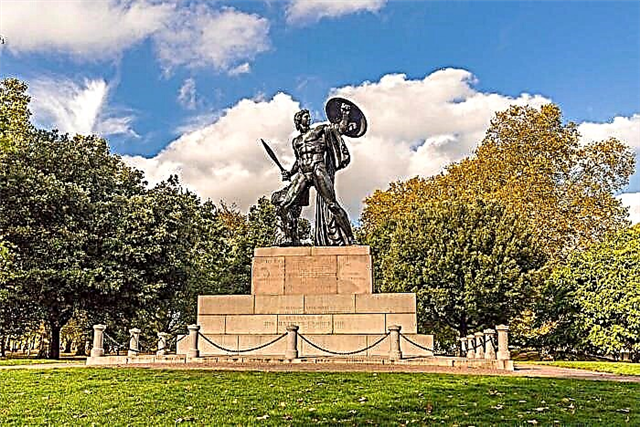
Cleopatra's Needle
The ancient Egyptian obelisk has come a long way to Britain. Height - 18 meters, weight - about 186 tons. On its surface are the symbols and names of the pharaohs. In the middle of the 2nd millennium BC, the obelisk left its native lands. For centuries he was in Alexandria, from where he was sent in 1877 to London. A few months later, it was installed on the Victoria Embankment, along with specially cast bronze sphinxes.

"Little Ben"
A replica of one of London's top landmarks is located near Victoria Station in Westminster. For the first time Little Ben appeared on the streets of the capital in 1892, later it was removed and restored only in 1981. The second time the cast-iron clock tower had to leave its site due to the restoration of the street, and the monument itself needed repair. In 2016, "Little Ben" returned to its rightful place.

"Horse by the water"
Greets tourists at the entrance to Hyde Park. Created by Nick Friddian-Green in 2010. He did not depict the whole horse, but limited himself to only the head. The breed chosen as the "model" is also remarkable. Marvari horses are artificially bred. They are distinguished by a special shape of the neck, which allows the head to be turned to a greater angle. Also, these horses are incredibly hardy and can survive in extreme conditions.
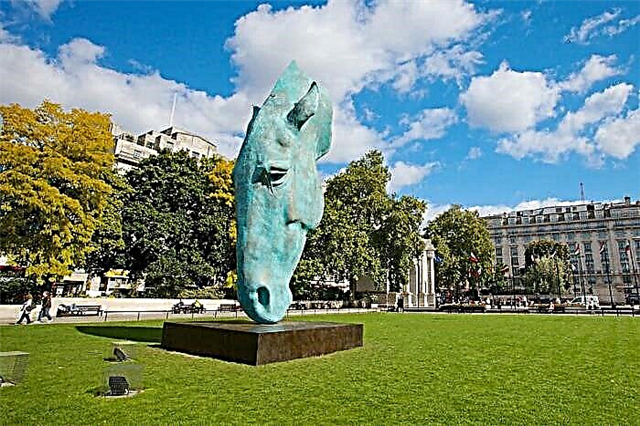
Monument to Isaac Newton
An unusual monument that refers to the work of William Blake. His "Newton" was created in 1795. The sculptor Eduardo Paolozzi took the painting of his predecessor as a basis, but made a lot of design and structural changes. The height of the monument is almost 4 meters. It was cast in 1988 and installed in the Tate Gallery in 1995. There are sculptures similar in appearance in Hong Kong and Edinburgh.

Monument to Agatha Christie
Located in the heart of London's theater district. In addition to the fact that Christie took place as a writer working in the detective genre, she influenced the development of theatrical art in her homeland. The monument looks like a book of impressive size. In its center there is a scoop neckline with a picture of Agatha Christie's profile. The opening took place in 2006 to celebrate the 60th anniversary of the play "The Mousetrap".

"Kindertransport - Arrival"
The monument was named after the rescue operation. Thousands of Jewish children were taken out of the countries that Nazism seized even before the official start of the war. The author of the memorial, Frank Meisler, was one of them himself. The opening of the composition took place in 2006, and the idea to celebrate such an important historical event was submitted to the sculptor by Prince Charles. The sculpture depicts a group of children standing on the rails.

Monument to George Orwell
The writer worked as a war correspondent, led an anti-fascist program and left a good reputation about himself in a number of other areas. In 2016, a monument in his honor was unveiled near the BBC headquarters. Martin Jennings portrayed Orwell with a cigarette in his hand. Nearby is a tablet with the writer's dictum about freedom. Orwell used radio station references in his most famous novel, 1984.

Memorial to the Crimean War
Created in 1861, changed locations in 1915. It was relocated to make way for two more sculptures celebrating the Allied victory in the Crimean War. The monument was cast from cannons captured during the siege of Sevastopol. The memorial represents three figures of guardsmen in the clothes of their time, and above them is a symbolic image of a woman, identified with Honor and Pride.

"Women in World War II"
Located at Parliament Square on Whitehall Street. The project was conceived for a long time, John W. Mills was chosen as the sculptor. For the most part, the creation of the memorial was paid for by Elizabeth II, who donated 1 million pounds. On all sides of the tall black pedestal, 17 sets of bronze clothes are hung: this is how women dressed for military service and work in the rear during the Second World War.

Monument to Richard I the Lionheart
The English monarch is depicted on a horse with a sword raised up. The author of the project is Carlo Marochetti, an Italian baron. Initially, the sculpture was shown at an international exhibition, and then it was installed in 1860 near the Palace of Westminster. During the bombing during the Second World War, the monument was damaged. The large damage was repaired, but the small ones did not, because they are also evidence of the era.

"Conversation with Oscar Wilde"
One of London's most unusual and controversial landmarks. He was placed near Trafalgar Square. The opening was timed to coincide with the 100th anniversary of the writer. The sculptural composition looks like a bench, from which Wilde's head and arm protrude. He is holding a cigarette. The manner in which the image is depicted makes the appearance more distinguishable from a distance than from up close. Nearby you can sit down and talk with a writer.

"Meeting point"
After renovation in 2007, St Pancras Station was opened. The ceremony was attended by Elizabeth II. It is an important transport point linking the British capital with cities in other countries. Especially for this day, Paul Day made a sculpture of lovers who saw each other for the first time after a long separation. Upon closer inspection, you can see images of the inhabitants of stations and trains under them.

Monument to Vladimir the Great
The Ukrainian community decided to celebrate the 1000 baptism of Rus by installing a monument to Prince Vladimir of Kiev. The project was entrusted to Leo Maul, a Canadian sculptor with Ukrainian roots. The monument was opened in 1988 near the Goland Park station. Vladimir is leaning on a shield, and in his other hand he holds a cross more than his own height. The pedestal indicates that he is a Ukrainian ruler, which is historically not entirely true.

"Traffic light tree"
In London, the Street Art Commission in 1998 announced a competition to design the best decoration for the city. The winner was the project of Pierre Vivant, a French sculptor. From 25 traffic lights, he collected a kind of tree. While the abundance of lights makes it seem like the design is chaotic, in fact, each color lights up in a specific order. So the author noted the infinity of the rhythm of the modern world.

Cenotaph
This term in a broad sense refers to tombstones installed in a place where there are no remains of the deceased. The London memorial of the same name is dedicated to unknown soldiers who gave their lives on the fields of the First World War. The cenotaph was installed in 1919 on Whitehall Street. Every year people come here on Memorial Day and put on special badges - poppies. And the royal family lays flowers.

Monument to Mary Sicol
This woman of Jamaican origin became famous during the Crimean War, when she organized a field hospital and nursed seriously injured soldiers. Sichol has been awarded the unofficial title of "Greatest Black British Woman" in a compatriot poll. The monument was erected in 2016 in the garden of St. Thomas's Hospital in the South Bank area. The author of the composition is Martin Jennings.

Memorial to victims of bombings in Bali
Opened in 2006 on the 4th anniversary of the tragedy in Bali. Then, as a result of terrorist attacks, more than 200 people were killed, including 28 British nationals. At the same time, the authors of the memorial emphasize that it was created to honor the memory of all victims, regardless of nationality. It is a wall with the names of the victims and a sphere on which images of doves - symbols of peace are applied.

Memorial to King George VI and Queen Elizabeth
In its current form, the sculptural group was presented in 2009 in Westminster. At the same time, the statue of George VI was made and installed back in 1955. Both opening ceremonies were attended by Elizabeth II. Both monuments are made of bronze and are similar in style. They have white pedestals with coats of arms and inscriptions. The king is positioned above and in the background, and the king is below and in the foreground.

Statues of statesmen on Parliament Square
Since the 19th century, statues of prominent figures from both Britain and other countries have appeared on Parliament Square. Now there are 12 of them.The oldest monument is considered to be the monument to George Cannig, Prime Minister and Minister of Foreign Affairs. The statue was created in 1832, but it was in its current place only after the Second World War. The last statue to date, unveiled in 2018, is dedicated to Dame Millicent Garrett Fossett and her struggle for women's equality.




